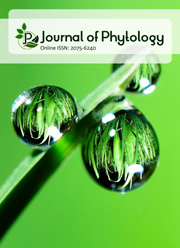Secondary xylary features in proving truth/falsity of an alibi: examples of three important Indian commercial woods
DOI:
https://doi.org/10.19071/cb.2017.v8.3227Abstract
Secondary xylary characters of wood are useful to identify a wood up to its generic or specific level and thus may prove or disprove the alibi of the retailers i.e., a wood is genuine or not. In the present study, 26 wood samples were collected from the local markets of Baruipur, Sealdah and Garia in Kolkata, West Bengal. Among them, 8 were sold as ‘Sandal wood’ (Santalum album), 4 as ‘Red Sanders’ (Pterocarpus santalinus) and 14 as ‘Sal wood’ (Shorea robusta). Results indicate that xylotomical features of most of the collected ‘sandal wood’ and ‘red sander’ samples did not match with the reference Santalum album and Pterocarpus santalinus samples whereas most of the collected ‘Sal wood’ samples from furniture shops matched with the reference samples of Shorea robusta. Present study successfully indicates that xylotomical investigations of commercial wood may establish the authenticity of wood of commerce.Downloads
References
REFERENCES
Clavers F. Practical Botany. Edited by Briggs WM. University tutorial Press Ltd. Drury Lane, W.C. London; 1911.
Graham S. Anatomy of the Lindbergh kidnapping. J Forensic Sci 1997; 42: 368-377.
Illic T. The CSIRO family of Hardwood identification. E.J. Brill, Leiden; 1987.
Kerley ER, Ubelaker DH. Revisions in the Microscopic Method of Estimating age at Death in Human Cortical Bone. Am J Phys Anthropol 1978; 48: 545Â546.
Miller RB. Identification of wood fragments in trace elements. In: Proceedings of International Symposium on the Forensic Aspects of Trace Elements. U.S. Department of Justice Federal Bureau of Investigation, FBI Academy, Quantico, Virginia; 1994. pp. 91-111.
Metcalfe CR, Chalk L. Anatomy of dicotyledons 1 &2, Clarendon Press Oxford; 1950.
Quatrehomme G, Lacoste A, Bailet P, Grevin G, Ollier, A. Contribution of microscopic plant anatomy to post-mortem bone dating. J Forensic Sci 1997; 42:140-3.
Schweingruber FH. Tree Rings: Basics and Applications of Dendrochronology. Reidel D. Publishing Company, Dordrecht. Novanet: Dalhousie Killam Library QK 477.2 A6 S3913 SCI; 1988.
Vanezis P, Grant SB, Grant JH. Medical and scientific investigations of an exhumation in unhallowed ground. Med Sci Law 1978; 18(3): 209-21.
Ward J. Hierarchical grouping to optimize an objective function. J Am Stat Assoc 1963; 58: 236-244.
Willey P, Heilman A. Estimating time since death using plant roots and stems. J Forensic Sci 1987; 32(5): 1264-1270.



 .
.